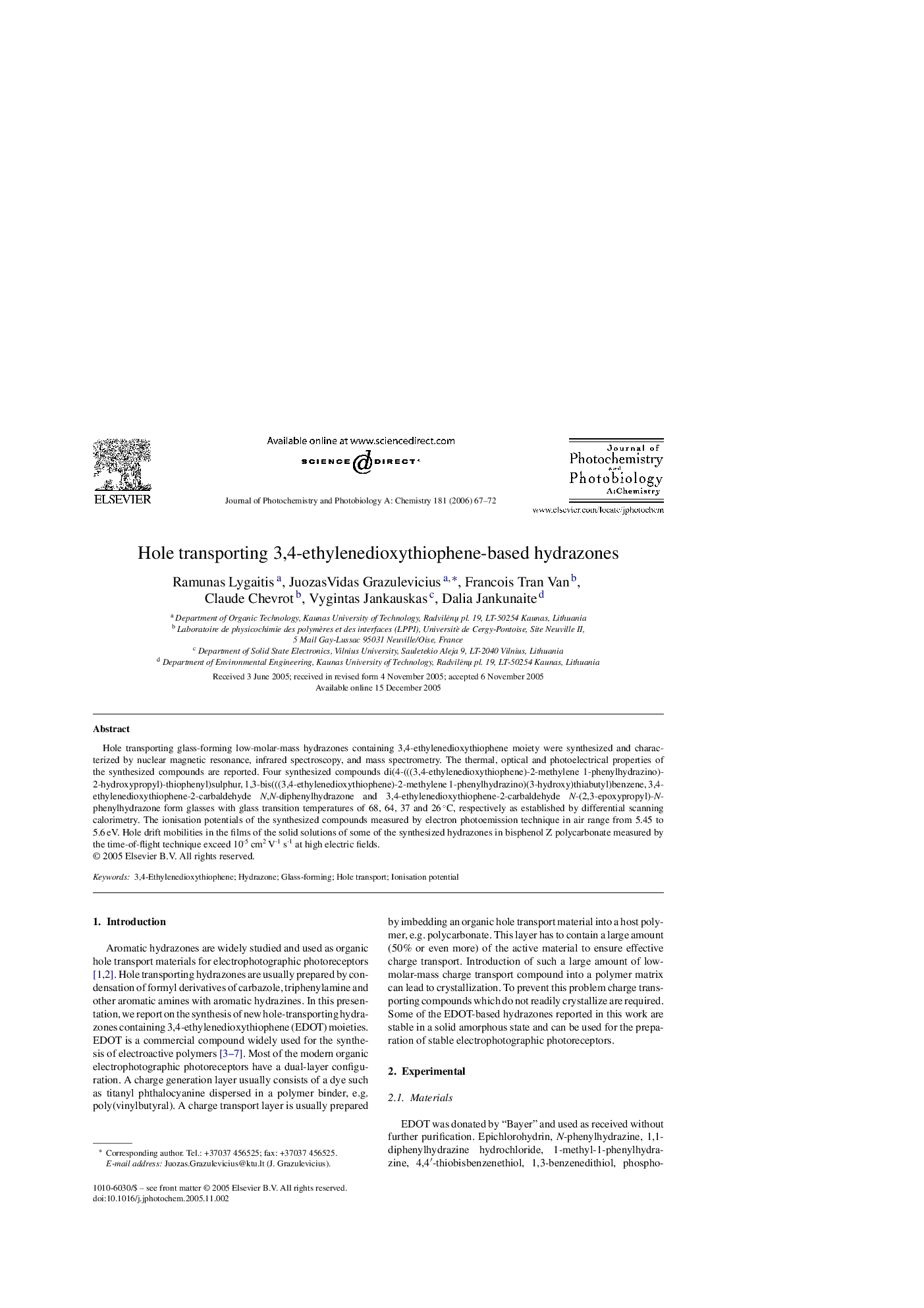| Article ID | Journal | Published Year | Pages | File Type |
|---|---|---|---|---|
| 29117 | Journal of Photochemistry and Photobiology A: Chemistry | 2006 | 6 Pages |
Hole transporting glass-forming low-molar-mass hydrazones containing 3,4-ethylenedioxythiophene moiety were synthesized and characterized by nuclear magnetic resonance, infrared spectroscopy, and mass spectrometry. The thermal, optical and photoelectrical properties of the synthesized compounds are reported. Four synthesized compounds di(4-(((3,4-ethylenedioxythiophene)-2-methylene 1-phenylhydrazino)-2-hydroxypropyl)-thiophenyl)sulphur, 1,3-bis(((3,4-ethylenedioxythiophene)-2-methylene 1-phenylhydrazino)(3-hydroxy)thiabutyl)benzene, 3,4-ethylenedioxythiophene-2-carbaldehyde N,N-diphenylhydrazone and 3,4-ethylenedioxythiophene-2-carbaldehyde N-(2,3-epoxypropyl)-N-phenylhydrazone form glasses with glass transition temperatures of 68, 64, 37 and 26 °C, respectively as established by differential scanning calorimetry. The ionisation potentials of the synthesized compounds measured by electron photoemission technique in air range from 5.45 to 5.6 eV. Hole drift mobilities in the films of the solid solutions of some of the synthesized hydrazones in bisphenol Z polycarbonate measured by the time-of-flight technique exceed 10-5 cm2 V-1 s-1 at high electric fields.
